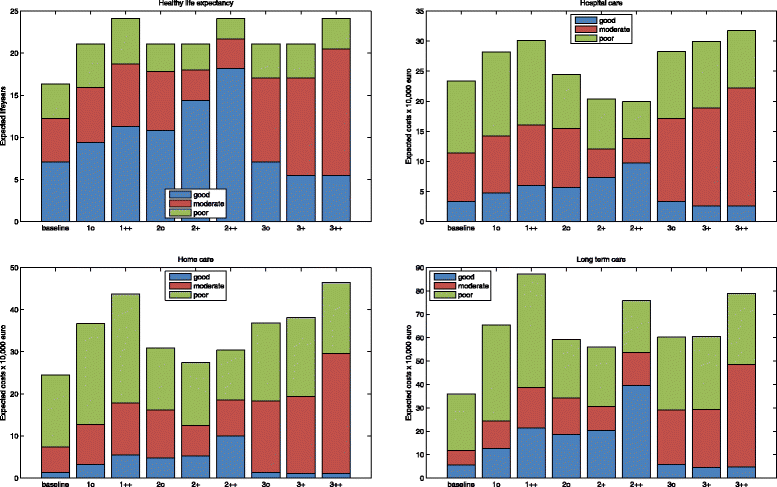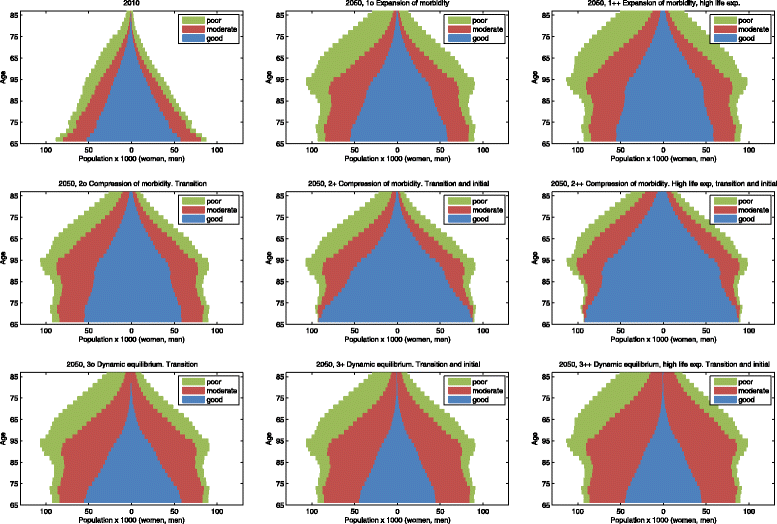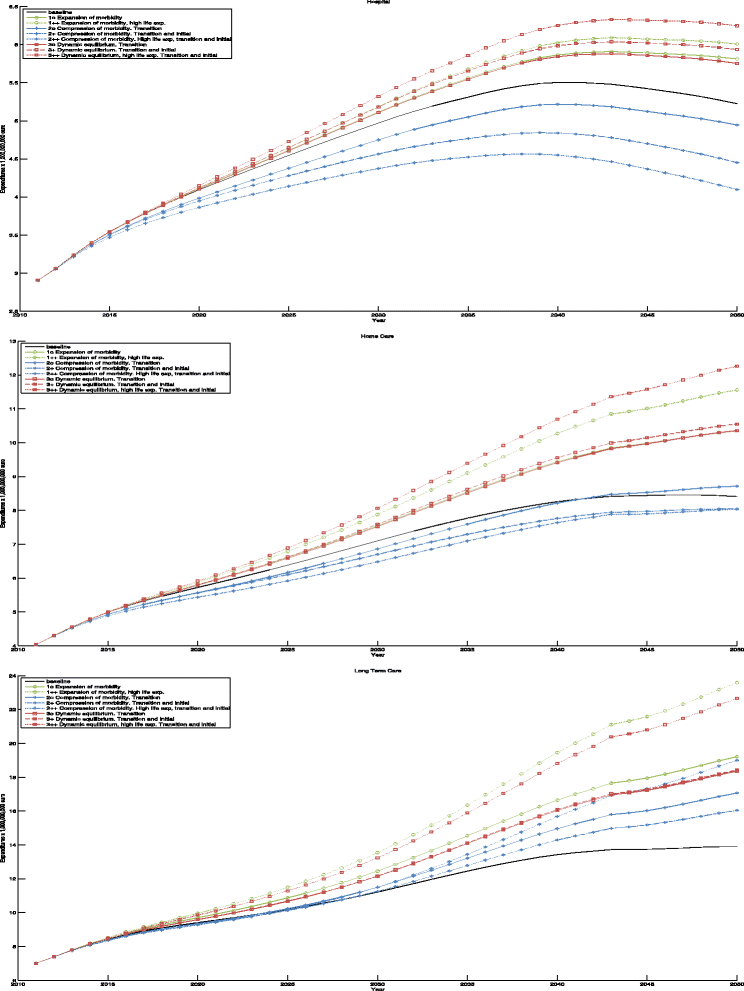The effect of trends in health and longevity on health services use by older adults
- PMID: 26704342
- PMCID: PMC4690430
- DOI: 10.1186/s12913-015-1239-8
The effect of trends in health and longevity on health services use by older adults
Abstract
Background: The effect of population aging on future health services use depends on the relationship between longevity gains and health. Whether further gains in life expectancy will be paired by improvements in health is uncertain. We therefore analyze the effect of population ageing on health services use under different health scenarios. We focus on the possibly diverging trends between different dimensions of health and their effect on health services use.
Methods: Using longitudinal data on health and health services use, a latent Markov model has been estimated that includes different dimensions of health. We use this model to perform a simulation study and analyze the health dynamics that drive the effect of population aging. We simulate three health scenarios on the relationship between longevity and health (expansion of morbidity, compression of morbidity, and the dynamic equilibrium scenario). We use the scenarios to predict costs of health services use in the Netherlands between 2010 and 2050.
Results: Hospital use is predicted to decline after 2040, whereas long-term care will continue to rise up to 2050. Considerable differences in expenditure growth rates between scenarios with the same life expectancy but different trends in health are found. Compression of morbidity generally leads to the lowest growth. The effect of additional life expectancy gains within the same health scenario is relatively small for hospital care, but considerable for long-term care.
Conclusions: By comparing different health scenarios resulting in the same life expectancy, we show that health improvements do contain costs when they decrease morbidity but not mortality. This suggests that investing in healthy aging can contribute to containing health expenditure growth.
Figures





Similar articles
-
Time to death and health expenditure: an improved model for the impact of demographic change on health care costs.Age Ageing. 2004 Nov;33(6):556-61. doi: 10.1093/ageing/afh187. Epub 2004 Aug 12. Age Ageing. 2004. PMID: 15308460
-
Counting backward to health care's future: using time-to-death modeling to identify changes in end-of-life morbidity and the impact of aging on health care expenditures.Milbank Q. 2007 Jun;85(2):213-57. doi: 10.1111/j.1468-0009.2007.00485.x. Milbank Q. 2007. PMID: 17517114 Free PMC article. Review.
-
Long-term care cost drivers and expenditure projection to 2036 in Hong Kong.BMC Health Serv Res. 2009 Sep 24;9:172. doi: 10.1186/1472-6963-9-172. BMC Health Serv Res. 2009. PMID: 19775476 Free PMC article.
-
Geriatrics for the 3rd millennium.Wien Klin Wochenschr. 2000 May 5;112(9):386-93. Wien Klin Wochenschr. 2000. PMID: 10849949 Review.
-
The effect of lengthening life expectancy on future pension and long-term care expenditure in England, 2007 to 2032.Health Stat Q. 2011 Winter;(52):33-61. doi: 10.1057/hsq.2011.17. Health Stat Q. 2011. PMID: 22143594
Cited by
-
Adherence to the Mediterranean diet assessed by a novel dietary biomarker score and mortality in older adults: the InCHIANTI cohort study.BMC Med. 2021 Nov 24;19(1):280. doi: 10.1186/s12916-021-02154-7. BMC Med. 2021. PMID: 34814922 Free PMC article.
-
Roles and experiences of nurses in primary health care during the COVID-19 pandemic: a scoping review.BMC Nurs. 2024 Oct 11;23(1):740. doi: 10.1186/s12912-024-02406-w. BMC Nurs. 2024. PMID: 39394107 Free PMC article.
-
Kanagawa Investigation of the Total Check-up Data from the National database (KITCHEN): protocol for data-driven population-based repeated cross-sectional and 6-year cohort studies.BMJ Open. 2019 Feb 21;9(2):e023323. doi: 10.1136/bmjopen-2018-023323. BMJ Open. 2019. PMID: 30796118 Free PMC article.
-
Variations in disability and quality of life with age and sex between eight lower income and middle-income countries: data from the INDEPTH WHO-SAGE collaboration.BMJ Glob Health. 2017 Dec 20;2(4):e000508. doi: 10.1136/bmjgh-2017-000508. eCollection 2017. BMJ Glob Health. 2017. PMID: 29333288 Free PMC article.
-
Analysis of Healthcare Expenditures in Bulgaria.Healthcare (Basel). 2022 Jan 30;10(2):274. doi: 10.3390/healthcare10020274. Healthcare (Basel). 2022. PMID: 35206888 Free PMC article.
References
MeSH terms
LinkOut - more resources
Full Text Sources
Other Literature Sources
Molecular Biology Databases

